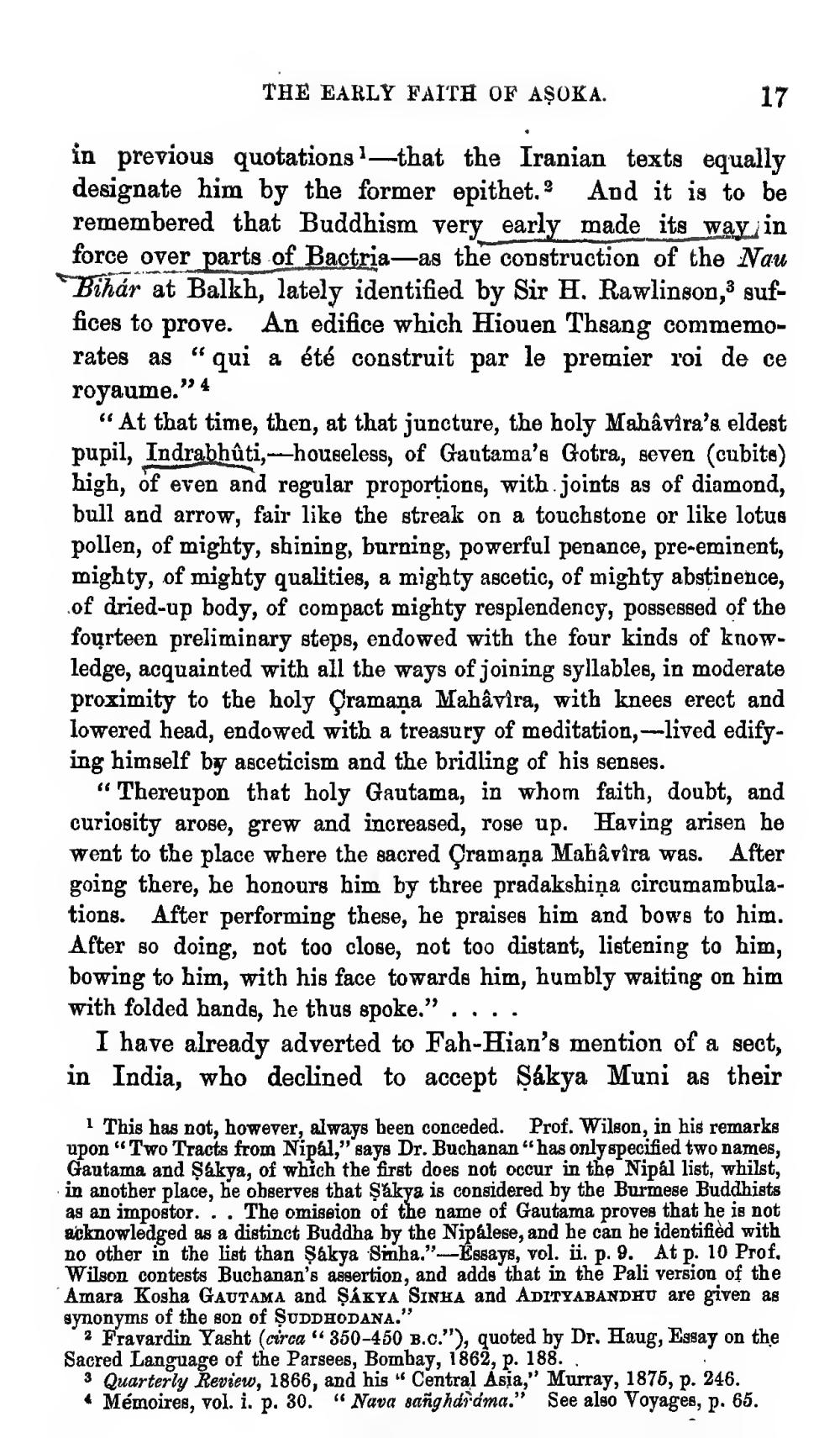________________
THE EARLY FAITH OF ASOKA.
17
2
in previous quotations-that the Iranian texts equally designate him by the former epithet. And it is to be remembered that Buddhism very early made its way in force over parts of Bactria- -as the construction of the Nau Bihár at Balkh, lately identified by Sir H. Rawlinson,3 suffices to prove. An edifice which Hiouen Thsang commemorates as 'qui a été construit par le premier roi de ce
kr
>>4
royaume.
"At that time, then, at that juncture, the holy Mahâvira's eldest pupil, Indrabhûti,-houseless, of Gautama's Gotra, seven (cubits) high, of even and regular proportions, with joints as of diamond, bull and arrow, fair like the streak on a touchstone or like lotus pollen, of mighty, shining, burning, powerful penance, pre-eminent, mighty, of mighty qualities, a mighty ascetic, of mighty abstinence, of dried-up body, of compact mighty resplendency, possessed of the fourteen preliminary steps, endowed with the four kinds of knowledge, acquainted with all the ways of joining syllables, in moderate proximity to the holy Cramana Mahâvira, with knees erect and lowered head, endowed with a treasury of meditation,-lived edifying himself by asceticism and the bridling of his senses.
""
Thereupon that holy Gautama, in whom faith, doubt, and curiosity arose, grew and increased, rose up. Having arisen he went to the place where the sacred Cramana Mahâvîra was. After going there, he honours him by three pradakshiņa circumambulations. After performing these, he praises him and bows to him. After so doing, not too close, not too distant, listening to him, bowing to him, with his face towards him, humbly waiting on him with folded hands, he thus spoke."
I have already adverted to Fah-Hian's mention of a sect, in India, who declined to accept Sákya Muni as their
1 This has not, however, always been conceded. Prof. Wilson, in his remarks upon "Two Tracts from Nipál," says Dr. Buchanan "has only specified two names, Gautama and Sakya, of which the first does not occur in the Nipál list, whilst, in another place, he observes that Sakya is considered by the Burmese Buddhists as an impostor. The omission of the name of Gautama proves that he is not acknowledged as a distinct Buddha by the Nipálese, and he can be identified with no other in the list than Sakya Simba."-Essays, vol. ii. p. 9. At p. 10 Prof. Wilson contests Buchanan's assertion, and adds that in the Pali version of the Amara Kosha GAUTAMA and SÁKYA SINHA and ADITYABANDHU are given as synonyms of the son of SUDDHODANA."
2 Fravardin Yasht (circa 350-450 B.C."), quoted by Dr. Haug, Essay on the Sacred Language of the Parsees, Bombay, 1862, p. 188.
3 Quarterly Review, 1866, and his " Central Asia," Murray, 1875, p. 246. • Mémoires, vol. i. p. 30. "Nava sanghdráma." See also Voyages, p. 65.




